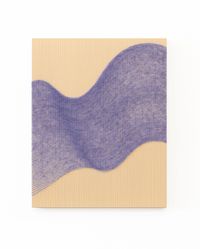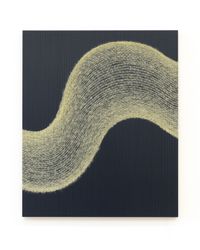Mimi Jung redefines the traditional practice of weaving, experimenting with intricate new techniques while exploring the medium's potential for self-expression. Jung breaks from the conventions of weaving to create her own unique visual language.
Read MoreThrough the spectrum of works originating from the loom, Jung investigates the way people continuously negotiate space within and between themselves. Her work examines multiple dimensions of identity and self-preservation, particularly relating to private and public self-representation and the ways these depictions are manifested through social and cultural mores. Her works play with the expansion or narrowing of space, placing great emphasis on the space existing between the warp and the weft. Her limning of space is reflexive, visible to those who are predisposed to see it.
Pareidolia, seeing what is not present and designating meaning to the meaningless, allows our narrative and societal expectations to align. As a result, what we witness and perceive is distinguishable. The Pareidolia series is based on Jung's childhood pastime, lying underneath a pergola and observing her surroundings. Abstracted by the rectangular wooden slats of the pergola, she repeatedly constructed new realities and interpretations of the cityscape and the sky. The titles Imbued With and Hear Me both connote the occurrence of impact and interactions. Between the grid-like formation of the woven painted cords, the interlaced plush wool and silk fibres are restrained to two dominant colours. In Imbued With, the Mint and the brown-grey wool fibres intertwine and diverge while moving upward and downward beyond the composition.
And in Hear Me, the brown-grey wool forms engulf and part from the grey silk forms. Jung tests the limitations of the traditional grid format, breaking the conventions of the loom by giving the works an almost kinetic potential. The synthesis of the three-dimensional organic forms with the linearity of the latticed background, in combination with the tonal variations in the natural fibres used, creates the impression of motion like that of clouds moving across the sky. Although fixed, Jung's forms are never static as their voids and translucencies encourage optical movement through and around them. The Pareidolia series, cued by their titles, invites viewers to impose their perceptions onto the works. And in doing so, investigate why and how we perceive what is in front of us.
Text courtesy Cadogan Gallery.





